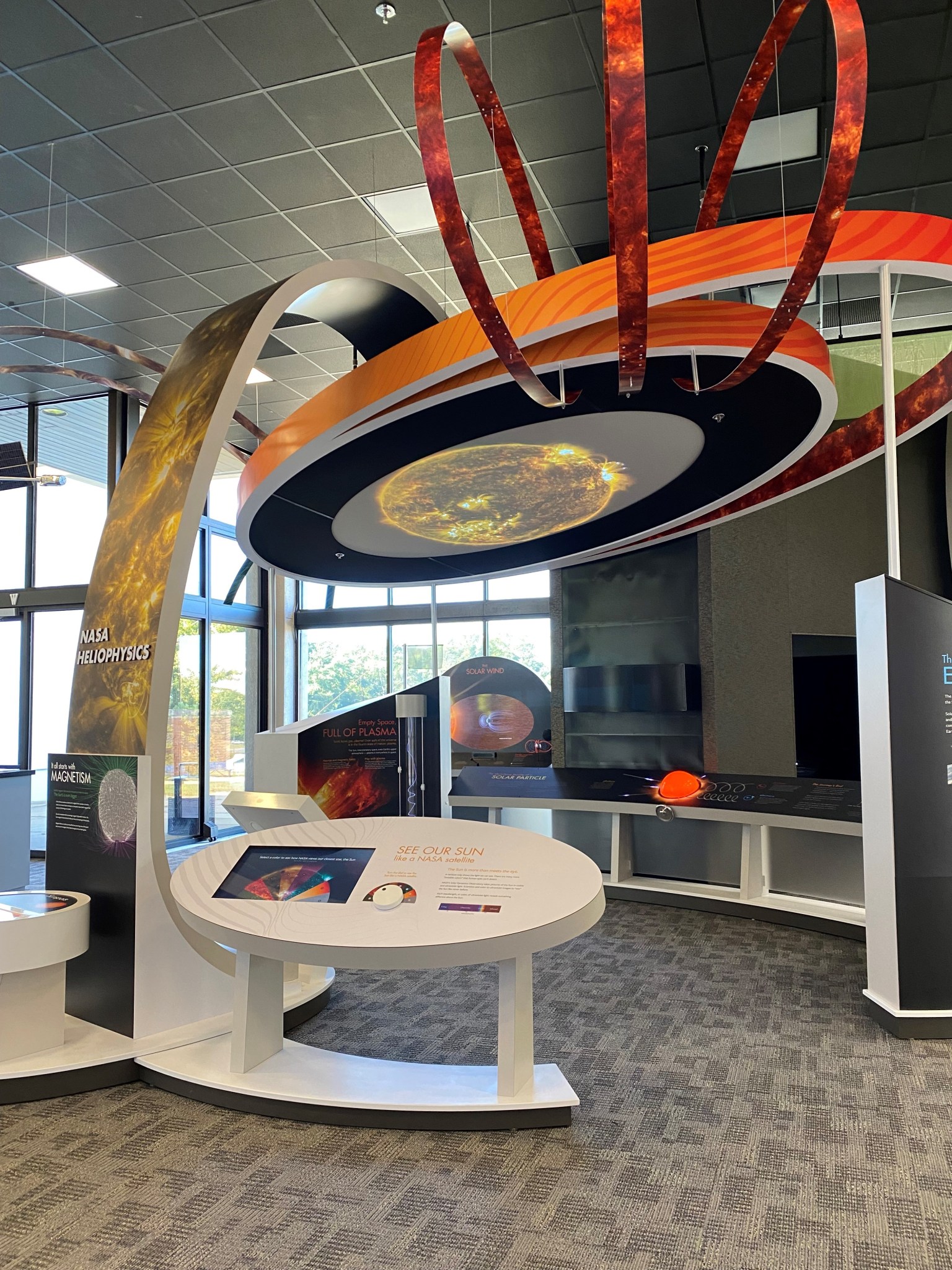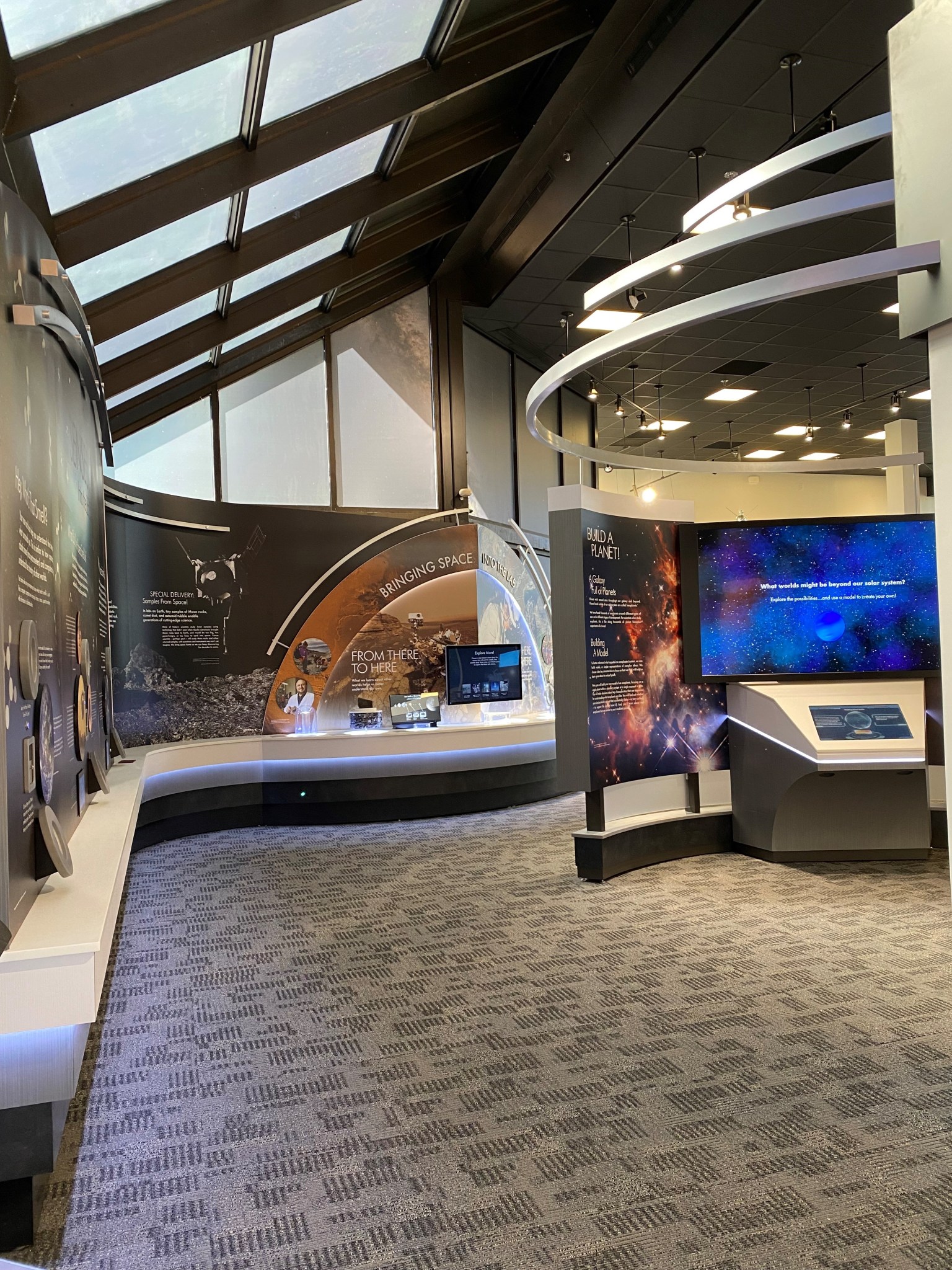NASA’s Goddard’s Space Flight Center in Greenbelt, Maryland, has two new permanent exhibits on display. The exhibits will inspire the public to learn more about our Sun and solar system.
Explore the Sun
Heliophysics is the study of the Sun – and its vast, multifaceted influence on space around us. We truly live in a “solar system,” a space environment driven by the Sun. Through its gravity, light, and powerful electromagnetic fields, our Sun fills the spaces between and around the planets, shaping their moment-by-moment dynamics and directing their long-term evolution.
The new heliophysics exhibit, called “Exploring the Spaces Between” reveals the many hidden and surprising ways our Sun affects everything in our solar system, including Earth. Visitors are invited to follow the journey of a solar particle, “hear” the solar wind, feel the protective resistance of Earth’s magnetic shield, watch the magnificent glow of the northern lights, and much more. Through multisensory, immersive experiences, the exhibit invites visitors to a new appreciation of the many ways we are connected to our closest star.
Explore the Planets
NASA’s planetary scientists are engaged in one of the oldest scientific pursuits: the observation and discovery of planetary objects in our solar system and beyond. We undertake this enterprise to better understand the history of our solar system and the processes that govern the planetary bodies that inhabit it. Goddard’s Solar System Exploration Division conducts research to explore the solar system and understand the formation and evolution of planetary systems.
“Beyond,” the theme of Goddard’s planetary exhibit, is a metaphor for striving and exploring and pushing the boundaries of human knowledge. This exhibit shows that asking questions and working in teams are important to NASA’s exploration of the universe. Visitors can use all of their senses to explore the origins of all planets, the variety of bodies in the solar system, and the boundaries of life. Visitors can study rocks from space, use their sense of smell to identify solar system objects, and use computer modeling to build exoplanets (planets orbiting stars beyond our Sun).
The Goddard Visitor Center conveys the center’s innovative and exciting work in Earth science, astrophysics, heliophysics, planetary science, engineering, communications, and technology development. Activities, exhibits, and events provide inspiring and captivating educational experiences for all ages. The Visitor Center also offers virtual field trips, Sunday Experiments, Ask a Scientist and many other on-site events.
NASA Goddard is home to the nation’s largest organization of scientists, engineers and technologists who build spacecraft, instruments and new technology to study Earth, the Sun, our solar system and the universe.
For more information about the Goddard Visitor Center, visit:
https://www.nasa.gov/centers/goddard/visitor/home/index.html
Media Contact:
Nancy Jones




























